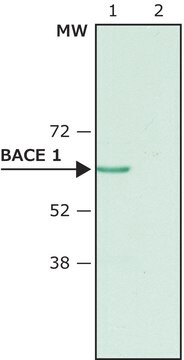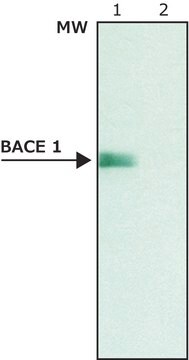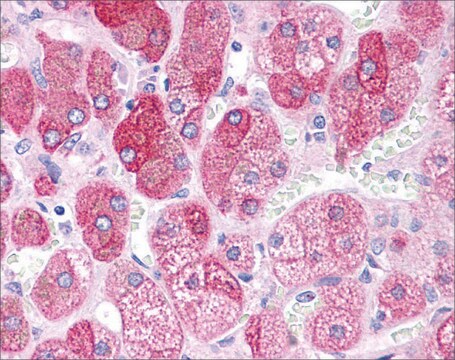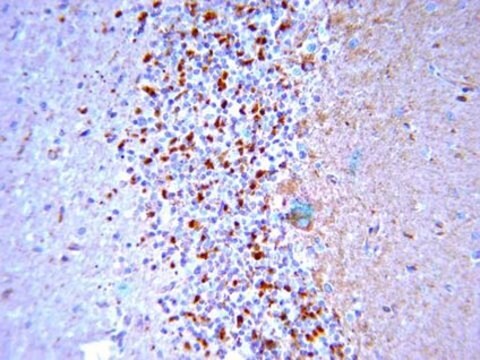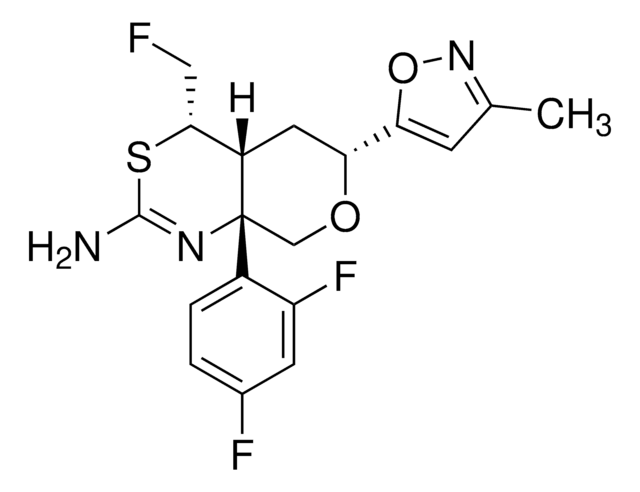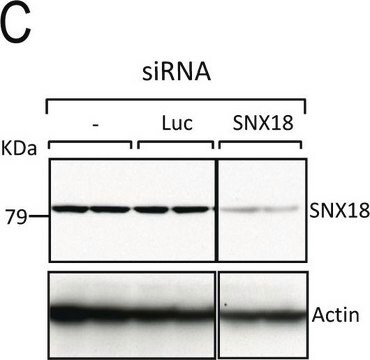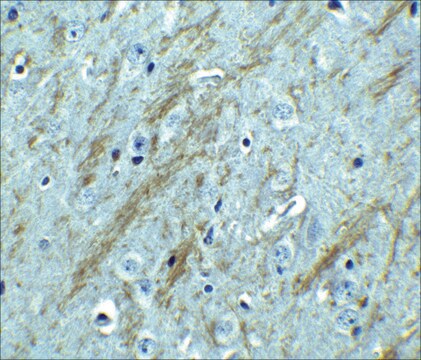MAB5308
Anti-BACE Antibody, CT, clone 61-3E7
clone 61-3E7, Chemicon®, from mouse
Synonyme(s) :
ASP2, BACE1, Beta Secretase, beta-Site APP Cleaving Enzyme
About This Item
Produits recommandés
Source biologique
mouse
Niveau de qualité
Forme d'anticorps
purified immunoglobulin
Type de produit anticorps
primary antibodies
Clone
61-3E7, monoclonal
Espèces réactives
primate, mouse, human, rat
Fabricant/nom de marque
Chemicon®
Technique(s)
immunoprecipitation (IP): suitable
western blot: suitable
Isotype
IgG1
Numéro d'accès NCBI
Numéro d'accès UniProt
Conditions d'expédition
wet ice
Modification post-traductionnelle de la cible
unmodified
Informations sur le gène
human ... BACE1(23621)
Description générale
BACE is an N-glycosylated integral membrane aspartyl protease with Mr=70 kDa. Mature BACE is produced from the immature form through a series of post-translational proteolytic cleavages and glycosylation. Sequence analysis has revealed that the immature form of BACE contains an N-terminal signal sequence (residues 1-21) followed by a large catalytic domain, a single transmembrane domain (residues 461-477), and a short cytoplasmic domain (residues 478-501). The signal sequence (1-21) is cleaved from the immature form by a signal peptidase located in the endoplasmic reticulum (ER), yielding the proBACE protein (Mr=75 kDa) which starts at residue 22. The proBACE protein is modified by cleavage of 24 N-terminal residues (aa 22-45), producing the mature BACE protein.
Spécificité
Immunogène
Application
Neuroscience
Neurodegenerative Diseases
Immunohistochemistry on paraformaldehyde fixed tissues from human, rat, mouse and monkey.
Immunocytochemistry on cells expressing BACE. Acetone or methanol fixation preferred; 4% PFA 5′, RT followed by 0.1% triton X-100 1 hour, can also be used. 1:200-1:500 is recommended, optimization is necessary.
Immunoprecipitation:
Optimal working dilutions must be determined by end user.
Description de la cible
Forme physique
Stockage et stabilité
Remarque sur l'analyse
Brain
Autres remarques
Informations légales
Clause de non-responsabilité
Vous ne trouvez pas le bon produit ?
Essayez notre Outil de sélection de produits.
Code de la classe de stockage
10 - Combustible liquids
Classe de danger pour l'eau (WGK)
WGK 2
Point d'éclair (°F)
Not applicable
Point d'éclair (°C)
Not applicable
Certificats d'analyse (COA)
Recherchez un Certificats d'analyse (COA) en saisissant le numéro de lot du produit. Les numéros de lot figurent sur l'étiquette du produit après les mots "Lot" ou "Batch".
Déjà en possession de ce produit ?
Retrouvez la documentation relative aux produits que vous avez récemment achetés dans la Bibliothèque de documents.
Notre équipe de scientifiques dispose d'une expérience dans tous les secteurs de la recherche, notamment en sciences de la vie, science des matériaux, synthèse chimique, chromatographie, analyse et dans de nombreux autres domaines..
Contacter notre Service technique